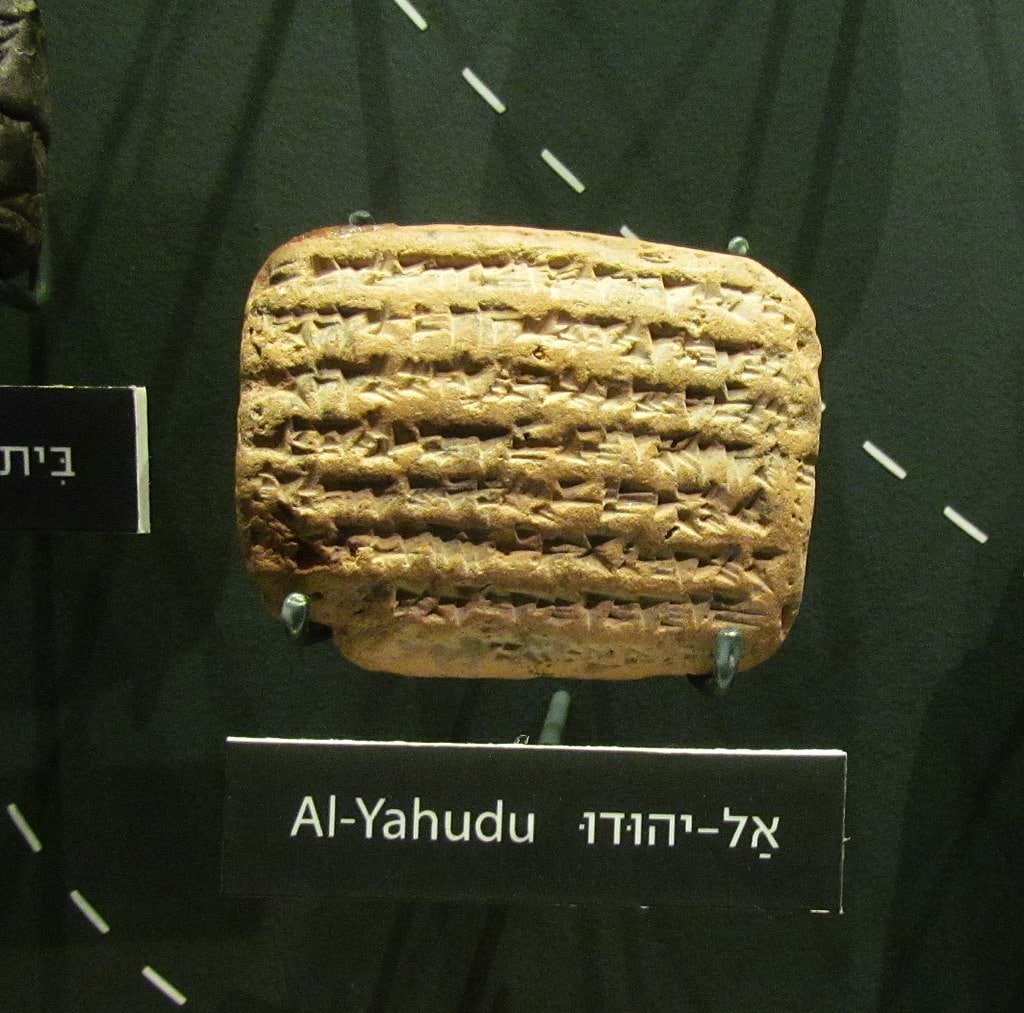
Beyond what the Bible says, mentions of Judean life during the Babylonian exile have generally been scarce throughout history. All of that changed in 2014, when archaeologists discovered about two hundred tablets written in cuneiform script that reveal aspects of the life of Jews who lived in Babylon at the time of the exile.
On November 16, at the 2022 Evangelical Theological Society annual meeting in Denver, Colorado, United States, Assyriologist and expert in Mesopotamic archaeology George Heath-Whyte discussed what the ongoing translation of the tablets reveals, what it doesn’t say, and what conclusions we can and cannot derive from those findings.
The Tablets
The tablets, known as the Al-Yahudu Texts, were acquired from a seller, so the specific place and background of the discovery have been lost. They have been dated between 572 and 477 BCE. This means that the oldest seem to have been written about 15 years after Babylon’s invasion of Israel.
The translation of the cuneiform script on the tablets shows that they are legal documents written in the Babylonian language. Some of them are promissory notes — one party is required to transfer goods to another party on a specific date. There are also receipts, marriage agreements, and other personal documents. Most come from the time of Darius’s reign, Heath-Whyte explained, and reveal the existence of a Jewish community living in the countryside, in a town southeast of Babylon.
“There is much we can learn about how life was for that particular community living in Babylon,” Heath-Whyte said. “They give us a glimpse into the Judean working the land … in the land-for-service scheme. [They show that] some Jews were quite entrepreneurial. Some secured jobs in the Babylonian administration.”
Heath-Whyte said that what the tablets show fits nicely with God’s message to the exiles in Jeremiah 29:4-7, which reads, “Build houses and dwell in them; plant gardens and eat their fruit. Take wives and beget sons and daughters; and take wives for your sons and give your daughters to husbands, so that they may bear sons and daughters — that you may be increased there, and not diminished. And seek the peace of the city where I have caused you to be carried away captive, and pray to the Lord for it; for in its peace you will have peace.”
A Mismatch with the Bible?
Some scholars have been using the findings in the tablets to point out what they call a mismatch with the Bible record. They say, for instance, that even though the Bible talks about the exile as a horrible period, the tablets show the overall situation of the Jews in exile was pretty good.
Heath-Whyte doesn’t think this is an either-or situation, however. “The evidence of the Babylonian sources is being misused. It is a false dichotomy,” he said. “Were Jews living in Babylon able to advance? Yes. Were Jews living in Babylon free people? No. They had to work in a land they didn’t own and render service to a foreign king. They were not entirely free.”

At the same time, Heath-Whyte explained, the Bible is clear that even though most of the Jews living in exile longed to return to their homeland, when they in fact had the opportunity, some of them decided to stay. Also, we know that Mordecai, Nehemiah, and others achieved relatively high positions in the kingdom.
Critics also point out that no tablet mentions that the Jews knew about Pentateuch and the Sabbath. But those are not things you would expect to find in a Babylonian legal document, Heath-Whyte explained. “The sources do not allow us to determine whether the Sabbath was observed,” he said, “even though one name that appears in one tablet is Shabbataiah.”
Others have pointed out that no tablet mentions the Jews returning to their homeland. Again, Heath-Whyte said, that is not something Babylonians would necessarily include in a legal document. “We have tablets that talk about sale of property, of paying of debts, but we can’t tell if they are connected to the Jews selling their properties before returning,” he said.
Limitations of the Sources
At the same time, Heath-Whyte acknowledged, there are many details these sources can’t tell us. The first has to do with the nature of the sources.
“People imagine they are letters, or fragments of the Psalms. But this is not the case,” he said. “These documents were written by Babylonian scribes in Babylonian legal jargon. There are large areas of the exiles’ lives that these documents do not mention.”
Also, the sources available are insufficient. “We don’t have many of them. Or not enough to paint a whole picture,” Heath-Whyte said.
Regarding the context of the sources, Heath-Whyte reminded his audience that the tablets were found and then sold. “We don’t know where they were found, or in what circumstances,” he said.
Their Given Names
What the tablets do reveal is the names of many of the Jews living in exile. According to Heath-Whyte, who studied the topic extensively, most of the names are not Babylonian but seem to be related to the biblical text and the God of Israel.
“The contents of a person’s name do not tell us what they believe, but it can show the connection with the belief in one God. You can see a sense of identity with God through their names,” he said. And, he added, “just like the Bible said, some Jews prospered in Babylon, and for at least some of them, the God of the Bible seemed to be their only and true God.”
In conclusion, Heath-Whyte emphasized, when we come across claims about these texts, we need to test them. “We must be careful not to assert what the texts don’t say, but we can be modestly optimistic,” he said. “Most of what these sources tell us fit with what the Bible says.”